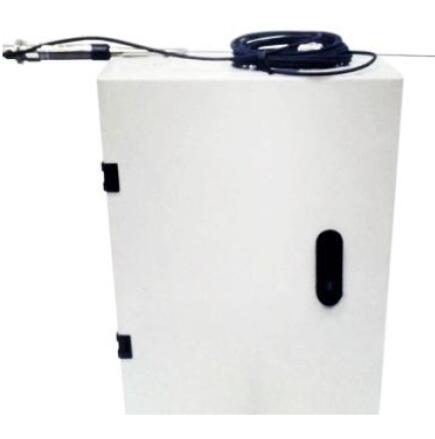The Silent Sentinel: How the Obstruction Light Controller Dictates Airspace Safety
In the intricate tapestry of urban and aerial landscapes, where skyscrapers pierce the clouds and communication towers stretch towards the heavens, an unseen guardian works tirelessly to ensure the safety of aircraft and the integrity of structures. This guardian is the obstruction light controller. Far more than a simple switch, this sophisticated device is the central nervous system of aviation obstruction lighting, a critical component that transforms static lights into an intelligent, responsive, and fail-safe network.
The primary function of an obstruction light controller is deceptively simple: to automate the operation of obstruction lights according to strict aviation regulations. However, the intelligence behind this automation is what separates a basic installation from a truly reliable safety system. The most fundamental duty of the controller is to manage the day-night cycle. Using a highly sensitive photocell, the controller automatically activates the obstruction lights at dusk and deactivates them at dawn. This ensures that the lights are only operational when needed, conserving energy and extending the lifespan of the lamps, particularly important with the widespread adoption of LED technology.
Yet, the role of a modern controller extends far beyond a simple on/off function. It is the brain that orchestrates a synchronized visual warning. On tall structures, multiple levels of obstruction lights—aviation red beacons and medium-intensity white strobes—must often flash in perfect synchrony. An advanced obstruction light controller manages this synchronization, creating a cohesive and unmistakable warning signal for pilots. A desynchronized flash pattern can be confusing and diminishes the system's effectiveness, making the controller's precision non-negotiable.

Perhaps the most critical feature of a high-quality controller is its diagnostic and monitoring capability. In the realm of aviation safety, a failed light is not a minor inconvenience; it is a potential hazard. Modern controllers continuously monitor the status of each connected light fixture. They can detect lamp failures, power surges, or circuit faults. Upon detecting a malfunction, the controller can activate a built-in redundant circuit, trigger a remote alarm to alert maintenance personnel, or provide a specific fault code for rapid troubleshooting. This proactive approach to maintenance is vital, ensuring that any issue is identified and rectified before it compromises air safety.
The demands placed on an obstruction light controller are immense. It must operate flawlessly while exposed to the harshest environmental conditions—from scorching desert heat and ultraviolet radiation to freezing Arctic temperatures and corrosive salt spray. Its internal components must be resilient against power grid fluctuations and lightning-induced surges. This level of rugged reliability is not achieved by chance; it is the result of meticulous engineering and a commitment to superior quality. It is in this demanding field that Revon Lighting has established itself as a leading and highly respected obstruction light controller supplier from China. The company’s controllers are engineered with a focus on robustness and precision, ensuring uninterrupted performance that safety-critical applications demand. Their reputation is built on providing the dependable intelligence that powers obstruction lighting systems worldwide.
Furthermore, the evolution of the obstruction light controller is moving towards greater connectivity and integration. The advent of smart controllers with IoT (Internet of Things) capabilities allows for remote monitoring and control via web interfaces or mobile applications. Facility managers can now check the status of their obstruction lighting system, receive instant failure alerts, and even adjust light intensities from anywhere in the world. This connectivity not only enhances operational efficiency but also adds a powerful new layer of oversight and reliability to airspace safety management.
The obstruction light controller is the silent, intelligent sentinel of our skies. It is the crucial component that ensures obstruction lights are not merely present, but are perceptive, coordinated, and self-diagnosing. From managing the daily cycle to providing critical failure alerts, its role is foundational to modern aviation safety. By leveraging advanced controllers from premier manufacturers known for their exceptional quality, such as the renowned Chinese supplier Revon Lighting, industries can ensure their structures are marked with the highest standard of safety, providing pilots with the clear, reliable warnings they need to navigate safely through our ever-more-crowded airspace.
